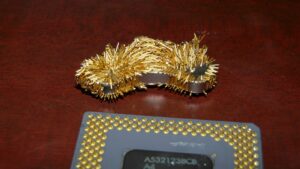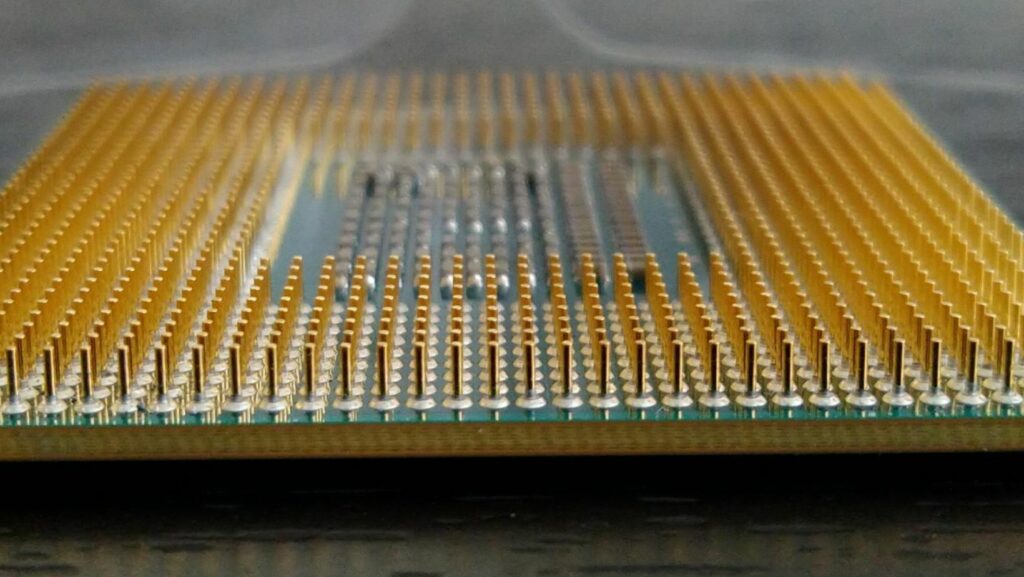Ever wondered why gold, a precious metal often associated with luxury and wealth, is frequently used in the realm of electronics? It’s not just because of its shiny allure but due to some intrinsic properties that make it a vital component in various electronic devices. From smartphones to satellites, gold’s presence is ubiquitous.
Why is Gold Used in Electronics

Gold exhibits remarkable characteristics that enhance its usefulness in electronics. It’s an excellent conductor of electricity, allowing for efficient energy transmission. Unlike other conductors, gold doesn’t corrode or tarnish, making it a durable choice for long-lasting devices.
Gold’s ductility, the ability to be drawn into thin wires without breaking, holds significant value in electronics applications. This feature enables manufacturers to use thin gold wires in complex electronic configurations, like those found in semiconductors.
In addition, gold features a high level of malleability. It can be flattened into extraordinarily thin sheets, called gold leaf. This property proves invaluable in creating thin film-like layers required in electronic devices, significantly increasing the viability of gold in the electronics industry.
Moreover, gold has low reactivity. This trait ensures the metal won’t easily react with other substances, maintaining the integrity of the electronic device’s components.
Finally, gold’s superior heat resistance protects electronic devices from overheating, thereby enhancing their longevity and reliability. This heat resistance combined with its other distinct properties position gold as a critical component in electronics production.
Benefits of Using Gold in Electronics

Gold’s deployment in electronics brings with it an array of benefits. Starting with its extraordinary conductivity, gold ensures swift and precise data transmission. Examples include wireless phone signals, computer data storage, and audiovisual components. Next, it’s the durability factor, boosted by gold’s high corrosion resistance, which contributes to its longevity. Products such as mobile phones, automotive electronics, or GPS units are all proof of this.
Thirdly, gold’s ductility and malleability enable creation of intricate designs and ultra-thin layers in electronic components. For instance, gold is frequently used to make semiconductors, connectors, and switches. The fact that gold’s low reactivity ensures negligible interference in signal transmission is another notable advantage. Lastly, its superior heat resistance qualifies gold for critical roles in safety applications. For example, in airbags, life-support systems, and break systems, it’s considered a life saver.
Applications of Gold in Modern Electronics
Gold holds a dominant position in semiconductors, for instance, in its use as bonding wire. Nearly 10% of gold’s consumption caters to semiconductors. The superior ductility and excellent corrosion resistance secure connections in transistors, microchips, and memory chips, ensuring high performance.

In printed circuit boards found in virtually all electronic devices, gold primarily connects layers of the board. Take computers, 10 grams of gold typically connects different parts of the main circuit in the typical desktop PC. Gold’s low resistivity aspect enables rapid and accurate transmission of digital signals. To maximize gold’s efficiency, engineers carefully design PCB to ensure minimal resistance and optimal signal flow. A well-designed PCB helps maintain the integrity and performance of high-speed electronic circuits, especially in complex systems
In connectors and switches, gold proves integral. Devices like smartphones, gaming consoles, and televisions employ gold-plated connectors for reliable and lossless data transfer. Gold doesn’t tarnish, maintaining clear connections over time. Barrier metal connectors are also present in electronic devices, where gold safeguards against oxidation and improves signal quality.
In GPS systems, gold ensures unimpeded transmission, manifesting the utmost importance in safety and positioning systems.
Comparing Gold with Other Conductive Metals
Gold’s unique properties set it apart in the electronics world. Its superior conductivity, resistance to corrosion, and ductility make it the go-to metal for components like semiconductors, printed circuit boards, and connectors. Unlike other conductive metals, gold doesn’t tarnish, ensuring reliable data transfer over time. Its role in critical applications such as GPS systems and airbags can’t be understated. Gold’s heat resistance and rapid signal transmission capabilities further cement its place in the industry. While alternatives may exist, none match gold’s performance and reliability in electronic devices. So, when it comes to electronics, gold isn’t just a luxury—it’s a necessity.

